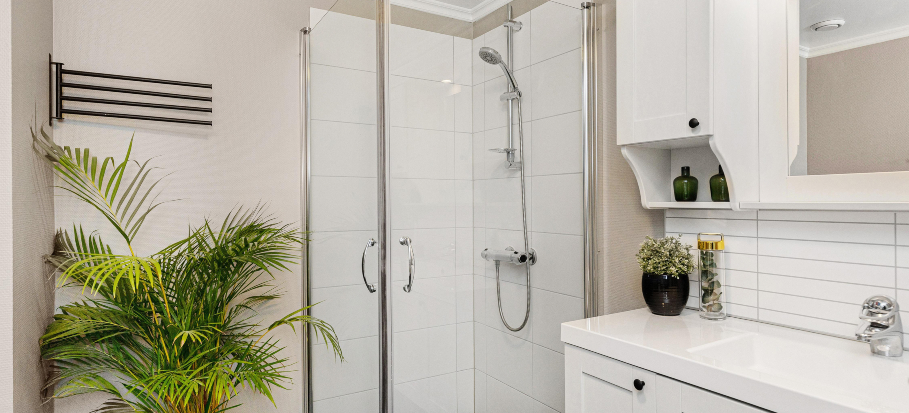20 Preventative Plumbing Maintenance Tips: A Complete Homeowner’s Guide

Plumbing maintenance refers to regularly scheduled checks, cleaning, and minor fixes that prevent plumbing issues before they escalate. From leaky taps to clogged drains, proper maintenance plumbing helps extend the life of your pipes and appliances while keeping plumbing repair costs low.
Whether you’re a homeowner or tenant, adopting a preventative plumbing maintenance routine means fewer surprises and costly emergencies. By implementing these plumbing tips, you can safeguard your home’s water system, avoid unexpected breakdowns, and minimise expensive plumbing service calls. This guide is packed with plumbing advice for homeowners, easy plumbing maintenance tips, and actionable steps for anyone looking to improve their home plumbing performance.
1. Take Care of Your Shut-Off Valves
The water shut-off valve has a vital role in cutting off the water supply when you’re away for a long time or need to handle plumbing repairs, installations, or emergency plumbing situations. If the knob, handle, or lever has built up rust and debris, or hasn’t been loosened regularly, you could face serious issues when an urgent plumbing emergency arises.
So, if you’re concerned about your home water safety and your neighbour’s property, it’s paramount to ensure your stopcock works properly. A useful plumbing tip is to turn the stopcock on and off once in a while (consider at least once every six months). This simple routine is part of essential preventative plumbing maintenance – it prevents the valve from getting stuck in one position, making it impossible to loosen when needed.
Last but not least, replace your old shut-off valve with a new one if it’s clear that its useful lifespan has ended. Keeping this valve functional can save you from extensive water damage, reduce plumbing repair costs, and is a smart part of any home plumbing checklist.
2. Maintain Safe Water Pressure
Domestic high water pressure is connected with massive amounts of water that is flowing out of your home’s water outlets. This is water torture, drains your wallet, and causes an unhealthy issue for your pipes. Usually the result is pipe erosion and pinhole leaks, and even worse – water damage if you leave the problem unattended.
So, if you suspect excessive pressure coming out of your sink, shower, or tap, it’s worth testing your system. A water pressure gauge is a handy tool to find out if the water pressure is in a healthy range (consider 40-60 PSI). If you are not a novice in plumbing installations, prevent future plumbing headaches when you install a pressure reduction valve. However, when domestic water pressure exceeds the above values two or more times, the most reasonable action is to contact your local water supply company.
Be on alert if you hear constant or occasional banging sound from your pipes, the toilet is running, faucets and taps are dripping – all these can be signs for extreme home water pressure.
To go further, you can also install a smart water pressure monitor, which connects to your phone and alerts you if the pressure spikes when you’re away. This is especially useful for preventing sudden pipe bursts that could lead to flooding and expensive repairs. In areas with hard water, elevated pressure can accelerate limescale buildup, so make sure your boiler system is regularly maintained as well.
3. Use the Right Tools for Drain Maintenance
Even though a clogged toilet or sink is frustrating and an emergency plumbing problem for your family, don’t be tempted to act rashly. All harsh chemical solutions promise fast cleaning results for your drains. But a manual repair is the reliable go-to option that would prevent any issues down the road. If dirt, debris, and waste food often cause blockages, invest in a plunger and pipe wrench to address small issues. Opt for a drain snake when clogs lay deeper in the plumbing system.
Using the correct plumbing tools not only prevents pipe damage, but also helps maintain optimal drain flow. Over-reliance on chemical drain cleaners can corrode the interior of your pipes, causing long-term damage that’s expensive to repair.
For regular drain maintenance, consider the following tools and methods:
- A cup plunger for shallow bathroom drain and kitchen sink clogs
- A flange plunger designed for toilets
- A hand auger (drain snake) for dislodging deeper blockages
- A drain cleaning brush to scrape out buildup in traps and pipes
- A wet/dry vacuum for sucking out stubborn clogs
- Enzyme-based cleaners (safe alternative to chemicals for monthly upkeep)
Plumbing maintenance tip: Keep these tools in a dedicated caddy under the sink so they’re always accessible in emergencies. If your home regularly experiences slow drainage, it may be worth booking an annual professional drain cleaning to prevent future backups.
4. Maintain Bathroom Fixtures
Don’t use harsh detergents when you want to remove mineral deposits from a shower head. They can leave scratches and damage the surface of your shower, sink, or toilet. For effective showerhead limescale removal, pour a mix of hot water and vinegar in a bowl and soak the showerhead for 30 minutes.
Like most things in life, shower head parts like O-ring and washers are subject to wear and tear. So, if you see any shower drips, leaks, or water sprouts everywhere, the reason could be cracked or broken watertight seals between the connections. Don’t throw your shower to the curb, though. To maintain your shower in top-notch shape, the best action is to replace the rubber washer every year. To complete the installation, you only need to have a tap washer kit.
To further prolong the life of your bathroom fixtures, inspect them for:
- Low water pressure or spray direction issues
- Rust or corrosion around the joints
- Signs of leakage under the sink basin or behind the toilet
By checking and cleaning your fixtures regularly, you avoid gradual plumbing deterioration and ensure everything functions efficiently and hygienically.
5. Know What Not to Flush
Blocked drains are inconvenient, smell bad, and happen when you least expect it. Luckily, to avoid clogs in the drainage system depends on your habits to flush down only “flushable” stuff.
Set yourself limits and ensure you throw nothing but toilet paper down the toilet. Seemingly “flushable” items, such as sanitary wipes, food waste, or eggshells, can create major plumbing issues. These items don’t break down like toilet paper and can stick together, forming large blockages that disrupt the entire plumbing system.
If tossing hair down the drain is a habit, sooner or later, expect a massive ball of flowing rubbish to form. Be wise and never throw away cooking waste products and substances like oil, grease, milk or other liquid which sooner or later will form debris, stuck on the pipe surface and mix with other stuff.
Another major risk during cold weather is frozen pipes. Remaining water in your system can turn into an ice block. Worse, frozen pipes can burst overnight, leading to water damage and costly emergency plumbing repairs.
So, before the cold snap occurs, disconnect all drain hoses from the outside taps. Make sure to insulate your exposed pipes, especially those connected to your central heating system, running along an outer wall, or located in unheated rooms and crawl spaces.
If tossing hair down the drain is a habit, sooner or later, expect a massive clog to form. Be wise and never dispose of cooking waste such as oil, grease, milk, or other liquids in the sink as these substances harden and cling to pipe walls, trapping other debris and leading to severe drain blockages.
A smart and affordable way to protect your drainage system is to use small metal, mesh, or silicone sieves over the plugholes. Install drain covers on baths and showers to trap hair before it becomes a problem.
6. Winter-Proof Your Plumbing
When temperatures plummet to sub-zero degrees, pipes (and especially exposed ones) become vulnerable to freezing or bursting. In fact, it only takes a few minutes for any remaining water inside the pipes to freeze into an ice block. The result? Frozen pipes that can burst, flooding your home and damaging your property.
To prevent such emergencies, it’s essential to winter-proof your plumbing before the cold snap sets in.
Start by disconnecting all drain hoses from outside taps. Water left in hoses can freeze and cause pressure buildup, potentially damaging the tap or connected pipes.
Next, insulate all exposed pipes, especially those that:
- Connect to your central heating system
- Run along outer walls
- Are located in unheated areas like lofts, crawl spaces, or basements
Pipe insulation materials like foam tubes or heat tape are affordable and easy to install, making them one of the best preventative plumbing maintenance measures you can take during the winter months.
7. Don’t Over-Tighten Valves
When doing DIY plumbing work at home, it’s easy to assume that the tighter the connection, the safer it is. But over-tightening screws, valves, and plumbing connections can actually do more harm than good. In fact, this common mistake often leads to:
- Broken bolts
- Stripped screws
- Cracked fittings
- And eventually, plumbing leaks
You might feel more secure using extra muscle to tighten your cold and hot water faucets, but the result may be quite the opposite – a loose seal that fails under pressure, leaving you with unexpected puddles on the floor.
To avoid such problems, always tighten plumbing fixtures just enough to prevent leaks, using the correct tools and following manufacturer guidelines. If you’re unsure, it’s better to err on the side of caution or consult a professional plumber rather than risk damaging your fittings.
8. Drip Faucets During Winter to Prevent Freezing
When temperatures drop below freezing, your pipes are at risk of bursting, especially those connected to outdoor plumbing or located along uninsulated walls. A simple yet effective plumbing maintenance tip is to let your faucets drip slightly during extremely cold weather.
Why? The small flow of water helps relieve pressure in the pipes and prevents freezing. You should drip faucets:
- Connected to exposed or poorly insulated pipes
- Near exterior walls or in unheated areas (like basements and attics)
- At least one in each section of your home
This preventative measure can protect your home plumbing system and save you from costly emergency repairs. It’s especially crucial for plumbing systems in cold climates, where frozen pipe damage is a leading cause of plumbing emergencies.
9. Keep Your Drains Clear the Right Way
Slow-draining water is one of the earliest signs of a clogged drain, and while it might be tempting to reach for a chemical drain cleaner, doing so can damage your pipes over time. These harsh cleaners contain acids that corrode plumbing systems and are harmful to the environment.
Instead, try natural drain cleaning methods such as:
- Pouring hot water down the drain
- Following with a mixture of vinegar and baking soda
- Letting the solution sit for 15–30 minutes before flushing again with hot water
Alternatively, enzyme-based cleaners are a safer, eco-friendly plumbing solution you can buy at hardware stores. These biological agents break down organic matter without harming your home plumbing.
Use natural cleaners once a month to maintain optimal drainage flow. This simple routine supports long-term preventative plumbing maintenance and can reduce the risk of serious blockages. If problems persist, contact a local plumber to inspect your drainage system, as the issue may lie deeper in your main sewer line or wastewater plumbing network.
10. Use Your Garbage Disposal Wisely
Your garbage disposal may be convenient, but improper use can lead to plumbing disasters. Tossing in the wrong items causes internal damage, clogging, or blockages deep in your home plumbing system. Knowing what not to put in garbage disposal units is crucial to avoid long-term plumbing issues.
Avoid disposing of:
- Fibrous foods (like celery or corn husks)
- Uncooked starches (pasta, rice)
- Coffee grounds
- Eggshells
- Grease and cooking oils
- Fruit pits or bones
Hot oil may seem harmless but cools quickly inside pipes, forming solid masses that cause clogs. Always dispose of grease in a sealed container and throw it in the bin instead.
Regular kitchen plumbing maintenance and mindful use of kitchen disposals go a long way in protecting your drainage system, avoiding emergency plumbing repairs, and extending the life of your plumbing fixtures.
To keep your kitchen plumbing running smoothly, run cold water before and after using the disposal unit to flush debris properly. If your disposal is making strange noises or draining slowly, it may be time to inspect it or call a local plumber. Taking care of your waste disposal system is a key part of effective plumbing maintenance at home.
11. Check Appliances for Water Leaks
Major household appliances like washing machines, dishwashers, refrigerators, and water heaters are all connected to your home plumbing system. Because they use large volumes of water, even a small leak can lead to water damage or mould growth.
Look for damp patches, water stains, or puddles around appliances. These are early signs of plumbing issues that can escalate if ignored.
Follow the manufacturer’s maintenance guidelines to keep appliances functioning properly. Check hoses and water connections every few months, and replace worn-out parts as needed.
Regular plumbing inspections help you avoid breakdowns and protect both your plumbing system and your home.
Leaks near appliances are among the most common plumbing maintenance problems, especially in homes with older plumbing fixtures or high water usage. Scheduling periodic checks can help you detect hidden leaks and reduce your overall plumbing repair costs. If you’re unsure, contact a certified plumber to assess your appliance plumbing connections.
12. Fix Leaking Faucets and Showerheads
Even a small drip can waste up to 180 gallons of water per week, driving up your utility bills and slowly damaging plumbing fixtures. Leaky taps are commonly caused by corroded valve seats, worn-out washers, or faulty O-rings.
Regularly inspect taps and showerheads for signs of leakage. Don’t forget to check under sinks while the water runs, hidden leaks often leave stains. Consider booking plumbing inspection services if you’re unsure about leak sources or want a comprehensive home plumbing inspection to catch issues early.
If your faucet continues to leak after tightening, it may be time to replace the washer or valve. Early fixes can save water and prevent costly plumbing damage.
Persistent faucet leaks may also be linked to high water pressure or aging plumbing systems. By addressing these issues early, you maintain water efficiency and avoid expensive plumbing repairs down the line. Keeping your bathroom plumbing in top shape is key to overall plumbing maintenance success.
13. Check for Toilet Leaks Before They Escalate
Toilet leaks can be sneaky – wasting water and driving up your utility bills without clear signs. Start by checking around the base of the toilet and under the toilet tank for any pooling water. Loose bolts might just need tightening, but deteriorated wax rings, flapper valves, or tank gaskets may require replacement.
For silent leaks, try this test: add a few drops of food colouring to the tank. If the colour appears in the bowl within 30 minutes without flushing, it’s a strong indicator that the flapper or another internal component needs replacing.
Make this simple check part of your preventative plumbing maintenance routine once or twice a year. It’s a low-cost way to prevent bigger issues like bathroom mould, floor damage, or long-term pipe corrosion.
You can also install a leak detection sensor or toilet leak detection device, especially in older homes where plumbing parts may be worn. These devices alert you to leaks early, helping reduce water waste and avoid emergency plumbing repairs. If you notice hissing sounds or water running continuously, don’t ignore them – they may indicate a leaky fill valve or faulty flush mechanism.
Routine toilet maintenance also includes checking water supply hoses, tightening connections, and inspecting the toilet shut-off valve to ensure it works if you need to cut the water during a repair.
14. Inspect Your Sewer Drains Annually
Whether your home is connected to a septic tank or a main sewer line, annual drain inspections are crucial. Over time, grease, tree roots, toilet paper buildup, and other debris can clog pipes, leading to sewage backups, foul odours, or even damage to your drainage system.
If left unchecked, blocked sewer drains can cause:
- Water backing up into sinks, showers, or toilets
- Persistent bad smells near drains
- Slow drainage throughout the house
Homeowners often overlook underground drain issues until it’s too late, making early intervention essential.
Schedule a professional CCTV drain inspection at least once per year. Licensed plumbers use camera scopes and hydro-jetting tools to identify and clear obstructions before they cause damage. If your home has large trees, older pipes, or a history of slow drainage, consider biannual inspections to stay ahead of root intrusion or pipe corrosion.
Include sewer line maintenance in your preventative plumbing maintenance checklist. Consistent upkeep helps preserve your entire home plumbing system and prevents hazardous wastewater backups.
15. Flush Your Water Heater to Extend Its Life
Your water heater works constantly to deliver hot water for showers, cleaning, and more, but over time, mineral deposits from hard water (like calcium and magnesium) can build up inside the tank. This sediment can corrode the sacrificial anode rod, reduce efficiency, and lead to heater failure.
Flushing your water heater once per year (or twice annually in hard water areas) removes sediment and prolongs the appliance’s lifespan. It also improves performance and helps prevent sudden breakdowns.
If you notice slow heating, strange noises, or higher energy bills, sediment buildup could be the cause.
For homes in areas with very hard water, consider installing a whole-house water softener to reduce mineral deposits throughout your plumbing system. Additionally, schedule routine hot water system maintenance to avoid corrosion and costly repairs.
Hiring a professional plumber ensures the flushing is done safely and correctly, especially if you’re unfamiliar with handling tank water heaters or combi boilers. They can also inspect your temperature-pressure relief valve (TPR) and replace the anode rod if needed.
Including water heater maintenance in your preventative plumbing checklist helps you avoid cold shower surprises, prolongs the unit’s energy efficiency, and keeps your home plumbing system running smoothly.
16. Shut Off Outdoor Fixtures With the Seasons
Outdoor plumbing fixtures like garden hoses, outside faucets, sprinkler systems, and backflow preventers need seasonal attention, especially before freezing temperatures arrive.
Shut off the water supply to these fixtures in the autumn, then drain and insulate them to prevent pipe bursts. In colder climates, sprinkler systems should be professionally blown out as part of a winterization procedure.
Regular seasonal shutoff is a simple yet vital part of preventative plumbing maintenance, especially if your property is prone to harsh winters.
To protect your external plumbing system, consider installing frost-proof outdoor faucets and insulated hose bib covers. These additions help keep outdoor water lines safe during sudden cold snaps.
If you have a garden irrigation system or external plumbing appliances, inspect them annually to ensure no cracks or leaks have developed due to temperature fluctuations. This also protects against water damage, frozen pipes, and costly repairs in the spring.
17. Drip Faucets in the Winter
During extreme cold, even a small stream of moving water can help prevent your pipes from freezing. If temperatures drop below -6°C (20°F) for several hours, dripping faucets could save you from a burst pipe disaster.
Focus on faucets connected to exposed or poorly insulated pipes. Drip at least one tap in each section of your home, especially bathrooms and kitchens. Shower heads near exterior walls should also be allowed to drip slightly overnight during deep freezes.
This method keeps pressure from building up inside your water lines, which is a common cause of winter pipe bursts. It’s one of the most effective plumbing tips to avoid frozen or cracked pipes.
A little water now can save thousands in winter plumbing repairs later. It’s a critical step in any plumbing maintenance checklist, especially in cold climates or areas with sub-zero temperatures.
18. Leave Your Heater On During Winter Vacations
Planning a winter getaway? Turning your heat off completely might seem like a good way to save on energy bills, but it puts your pipes at serious risk. If temperatures drop below freezing, water in your pipes can solidify, expand, and cause them to burst.
Before heading out, keep your home’s thermostat set to at least 13°C (55°F). This is especially important for unheated areas like basements, attics, and utility rooms, where exposed plumbing is more likely to freeze. If you have plumbing connected to an outdoor building or garage, consider placing a small space heater there too to maintain a safe ambient temperature.
This simple step is an essential part of preventative plumbing maintenance, helping to avoid frozen pipes, water damage, and costly emergency plumbing repairs. You should also inspect pipe insulation before leaving and ensure any known weak spots in your plumbing system are addressed.
By including this in your plumbing maintenance checklist, you safeguard your home and save yourself from returning to a burst pipe disaster.
19. Test Your Water Quality Regularly
Maintaining good water quality is essential for both your health and your plumbing system. Hard water — water with high levels of minerals like calcium and magnesium — can lead to mineral buildup in your pipes, appliances, and fixtures. This causes clogs, reduces efficiency, and shortens the lifespan of your water-using appliances.
Invest in a home water testing kit or have your water tested by a professional. If tests show high mineral content, consider installing a whole-house water softener or a filtration system. These can significantly reduce scale buildup, improve appliance performance, and protect your home plumbing from long-term damage.
20. Create a Seasonal Plumbing Maintenance Schedule
Being proactive is the best way to prevent plumbing issues. A seasonal maintenance plumbing checklist ensures that you address the specific needs of your plumbing system throughout the year.
In the spring, check for any pipe damage from winter freezes. In the summer, inspect sprinkler systems, outdoor faucets, and water pressure. Fall is the time to insulate exposed pipes and shut off outdoor water. During winter, focus on dripping faucets, keeping the thermostat set, and ensuring pipe insulation is intact.
Keeping a calendar of plumbing tasks helps you stay ahead of problems and reduces the likelihood of expensive plumbing emergencies.
Why Invest Time Into Preventative Maintenance?
Preventative maintenance is not essential to the day-to-day running of plumbing related assets, however it is crucial if you or your business is looking to reduce costs, repair time and downtime. With an efficient preventative maintenance schedule you are ensuring your assets (sinks, toilets, pipes etc) are well maintained and working efficiently leaving little room for damage.
Investing time initially to build out a preventative maintenance schedule will inevitably save you time down the line along with thousands of pounds worth of repairs.
It is important to remember that although preventative maintenance can help to avoid costly issues, emergency maintenance may still be required. Emergency maintenance may occur when faults arise that are accidental or out of your control; this could include accidental damage to pipes or weather related issues.
Emergency maintenance is often unavoidable, however plumbers can help to keep them at bay or even reduce the number of call-outs with an effective preventative maintenance strategy. In order to keep track of both scheduled preventative maintenance and emergency repairs, businesses often opt for a CMMS or digital tracking system.
What is a Computerised Maintenance Management System?
Beyond hands-on maintenance, technology plays a key role in modern plumbing upkeep. A CMMS, or computerised maintenance management system, is a digital solution offered to businesses as a method of tracking assets, tickets, and maintenance tasks. A Computerised Maintenance Management System enables plumbing businesses to ensure their preventative maintenance strategy is automated and updated regularly, helping to save money and time.
Simple CMMS solutions can also be implemented in homes around the world to help remind users of preventative tasks that need to be completed.
A digital maintenance system enables plumbers and maintenance teams to ditch paper and pen or messy spreadsheets and move all tasks into one central location. With everything being stored online and in the cloud, plumbers will no longer need to worry about losing certificates, signatures and important documents.
Not only is there an obvious productivity and cost benefit, businesses who opt for a digital management system over traditional paper systems will help to reduce paper and fuel waste.
How Does a CMMS Help With Preventative Maintenance For Plumbing?
A CMMS can be used as a preventative plumbing tracker and digital plumbing maintenance tool. It helps schedule inspections, track asset status, and manage emergency repairs. Even homeowners can use a plumbing checklist app to stay on top of recurring tasks like water heater flushing, seasonal pipe insulation, and leak checks.
A scheduler feature allows administrators to assign tickets to specific team members with the correct skill sets and in accordance with available working dates and times.
Conclusion
Consistent preventative plumbing maintenance is the key to avoiding costly emergencies and extending the life of your home’s plumbing system. While many tasks can be handled by homeowners, regular plumbing inspections by licensed professionals ensure deeper issues are caught early. Using tools like a plumbing checklist app or digital maintenance system helps you stay organised year-round.
20 Preventative Plumbing Maintenance Tips: A Complete Homeowner’s Guide
Need help? Hire the London Property Service experts today by giving us a call on 020 3078 5920.




